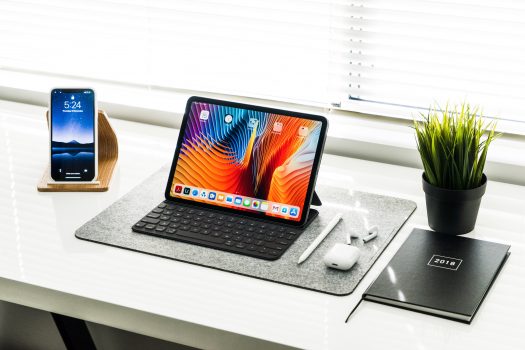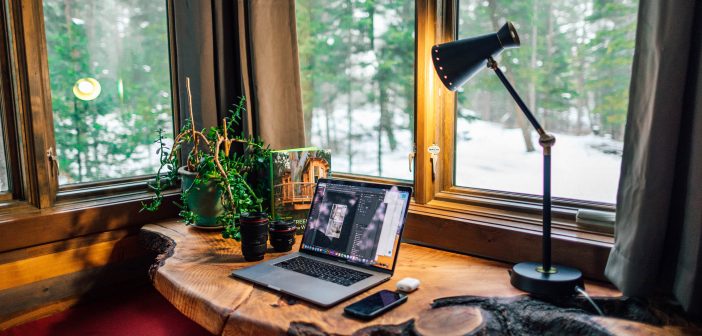Nearly six months after COVID-19 hit American soil, many of us still work remotely, including students, and with everything from raves to Netflix parties and even bar mitzvahs being hosted via Zoom, we are spending more time on our devices than ever. This issue is something that I’ve been grappling with on and off during the pandemic, although lately it has started to become a considerable problem. Between Zoom calls for school (plus the online homework) as well as general computer usage unrelated to school, I spend around 38-50+ hrs a week on my laptop. Factor in my phone use and daily movie nights and the time I spend looking at screens in a week is 73+ hours (occasionally nearing 100!). Going through my screen time reports and crunching the numbers was cringe inducing and downright upsetting, 70 plus hours in 7 days is a disturbingly inordinate amount of time spent looking at a screen. But what can I do? Coursework has to be completed, my phone is a lifeline to my friends and movie nights bring me joy. At the same time, the devices that seemingly do so much good are really just creating more psychological fatigue and technology burnout.
I’ve always been very tech-savvy and never minded spending a free afternoon tinkering around on my devices. Albeit, it wasn’t a pastime I partook in often— maybe a few times a month, but only if I had empty space in my day, and specifically wanted to veg out. Though for the last couple of months it has been a completely different situation. I did a little research, and wanted to share my findings. Here are some techniques and habits to implement into your routine to minimize the time spent on devices.
Morning & Night
You may have heard this one before, but that doesn’t make it any less true — screens shouldn’t be the first thing you look at when you wake up or the last thing you see before going to sleep. The best way to get an excellent night’s sleep is to ban the devices at night, especially in the bedroom! Come morning time let yourself naturally wake up and enjoy some quiet time alone with your thoughts. Instead of immediately reaching for your phone, start your day making a list. What do I wanna accomplish today? What is something that would bring me joy? If you don’t get everything on your list done, no worries. There’s always tomorrow.

Photo by Henry Ascroft on Unsplash
Categorizing Screen Time
I’ve started to realize that if I add labels to certain digital activities, I can easily distinguish what’s good and what’s not so good, because screen use is kind of like restaurants, some are good for you, and some aren’t. Reading on my Kindle — healthy. Scrolling social media — unhealthy. Reality TV — unhealthy. Documentaries — healthy. You get the idea. Reading my Kindle out by the pool is far more beneficial than going through Instagram lying in bed. It’s not necessarily a matter of using your screen time the ‘right’ or ‘wrong’ way — but rather rethinking your device usage based on what’s more beneficial, and doing what’s best for you. An additional thing you can do is designate certain areas of your home/property as device free zones. This ensures you’re not on the phone in places where it’s especially unneeded (bathroom anyone?).
Digital Detox
If you find yourself having a break in your schedule and don’t have one of the aforementioned online obligations, put the device to sleep and focus on you. This was especially true for me when I read a recent article from Harvard that more screen time leads to higher risk of diabetes and obesity. What is the solution? Get out and get moving!! Gardening, biking, swimming, boating the list goes on. There are so many great things you can do to get your mind and body out of the sedentary lifestyle too many of us have become accustomed to in the wake of the pandemic.

Photo by Robert Bye on Unsplash
I interviewed my friend Breanne about her technology use and how it’s changed since graduating from AUSB last quarter. She said that the amount of time she spends on her devices has gone way down. Now that she’s not constantly checking her email or worrying whether an assignment is due, her laptop use has plummeted. But as for her phone, well that’s a different story. Although despite the fact that her phone is still used regularly, she has a few tricks for days when she knows she needs a break from her phone. “Sometimes on the weekends I’ll put my phone on a high shelf near the middle of the house. I can still hear it if it goes off but because it’s high up and hard to reach, I’m a lot less likely to reach for it every time I have a notification.” For times when that’s not enough, Breanne said she purposely partakes in activities where a cell phone isn’t needed or it won’t work, like going bowling with friends, or hiking out of cellular range.
There you have it! I hope that this helps you in lowering your screen time and in turn, reducing your technology fatigue. Thanks for reading!
Featured Photo by Roberto Nickson on Unsplash




